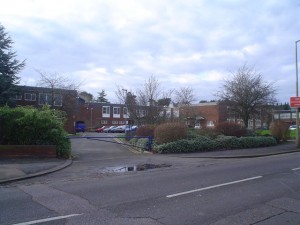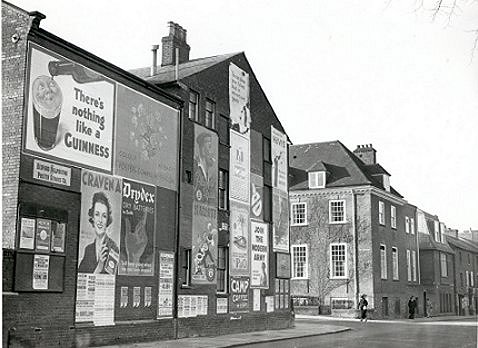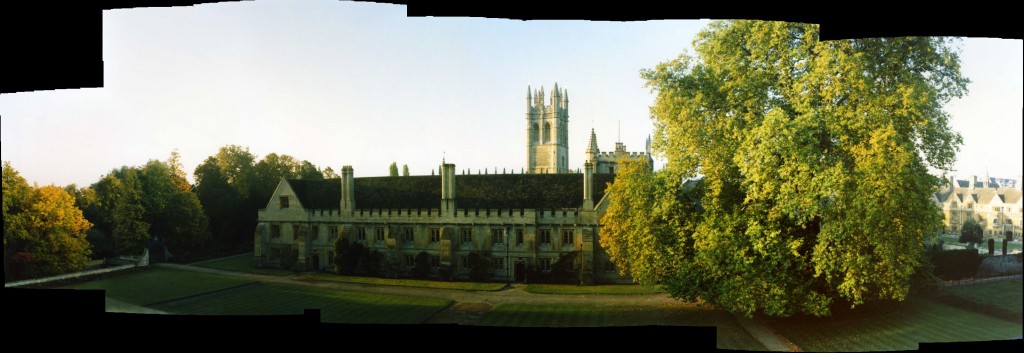
At 1’13” in the video below, a young man in black pulls himself off the wall to the right and crosses the road in front of the car. It’s an anxious gait he has, and a disassociated, almost dazed expression. I can remember feeling like that once. As well I might, because that young man is me, aged 16 in the summer of 1985, and all around me is the environment in which I first encountered classical music:
(I found this clip during an idle browse on Youtube a couple of years ago – my first response to running into my teenaged self was an urge to go in with guns and get him out of there).
Although the arrival of the Sony Walkman in 1979 changed this to some extent, it’s still a near-universal instinct that a piece of music has an ideal context, a place and time where it properly belongs and where it sounds most like itself. It’s usually not suburban Britain, although there are some examples of that. In the same way, places belong to certain kinds of music and not to others: unstaffed urban railway stations do not belong to Mozart  –  or at least, the people who loiter with menace at unstaffed stations don’t feel  they belong to Mozart and clear off. Mozart is Vienna’s and  Salzburg’s, the property of candle-light and whipped cream..
There’s an ideal way of experiencing music for yourself, too. Classical music operates a kind of sliding scale. Preferably, you attend the premiere, although you probably weren’t at this extraordinary premiere-to-end-them-all in 1808 (Beethoven’s Fifth and Sixth Symphonies, his Fourth Piano Concerto and his Choral Fantasy, all heard, together, in public for the first time!). Failing that, you are present at a concert featuring the conductor and orchestra du jour. If not that, then there’s the Proms, and it’s only when we’ve failed to achieve even that do we get out the Gramophone Guide to Music and start looking at CDs. (It’s still CDs in the classical world, thanks to the price collapse of a decade ago, but not for much longer).
Even the CDs call out for proper context: perhaps a decent, ideally slightly ageing stereo, in a bow-windowed Victorian front room that looks out onto the kind of neighbour-blocking hedge that won’t get clipped until the garden chap gets back from Ibiza. Which is where he is, again.Â
But it wasn’t like that for me. It was a few battered old cassette tapes, all the school library had, and an inherited mono radio-tape player from 1974 that had spent its lifetime in the kitchen glued to Radio One. It was a couple of “Classics for Pleasure” LPs on a Boots-the-Chemist brand record player of similar vintage. On one of the tapes was this:
Haydn, and Milton – in German! How that sounded, with 1980s suburban Britain as a backdrop..
It sounded ..like evidence for some sort of prosecution, as if the music had a stronger existence and prevailing imperative within itself, a higher prerogative than my surroundings, and that it had the capacity to prove everything around me wrong somehow, of pushing it all aside.
Of course, suburban Britain proved more stubborn than that. Before long, the music’s authority degenerated into a promise of elsewhere, as though it was playing from a different room where everything made a kind of aesthetic sense and life could be lived more fully. What I had to do – by any means necessary – was make it into that room, and then stay.
But first I put the Haydn Die Schopfung cassette into my Dixons knock-off Walkman, and cycled out into the countryside. Die Himmel erzählen die Ehre Gottes, the music assured me as I made a fast descent down one of Bedfordshire’s few real inclines. It struck me and strikes me now how extraordinary that was – Haydn cannot possibly have composed for the experience of 40mph downhill against a wind – and now there are a host of exclusively modern experiences which pre-modern music has been roped into accompanying and for which it proves a perfect fit.
Perhaps Haydn was a horseman: its hard to conceive of any other experience of that era that might have engendered the drawn-out euphoria his music describes so well.
I followed Die Schopfung‘s siren call, and within three years had this view from my window:
But even here the music seemed to be coming from another better room further off that I hadn’t been able to reach. And the university town too had a distant, dead feel to it underfoot, as if it had died unannounced and was about to crumple to the ground. In London, you felt the energy as a living, tangible thing, but not in the university town, because the great names lay in Holywell Churchyard unreplaced, and getting anything done there caused endless frustration, like wading through plasticine.
In Wild Life: A Year Living on Wild Food , John Lewis-Stempel never hesitates to import parts of modern life to illustrate the Herefordshire farmer’s existence – he references glam rock, cars, mobile telephones and more, and in the hands of a writer of his calibre this doesn’t jar: in fact, it rescues his book and his life from the perpetual nostalgia cycle that dominates our culture. The British use nostalgia to express their longings for the future, disguising wishes as memories. Lewis-Stempel doesn’t: and as a result, his Herefordshire, although replete with the past, is vividly here, present and contemporary. “Present and contemporary” Haydn and the university town were not.
Whilst I had that view from my window, I discovered in jazz and twentieth century composers  music which would stay there in the room with me without picking a fight with the surroundings. Duke Ellington, Rachmaninov and Gershwin were all the contemporaries of the buildings just visible on the far right, and it was their sounds I would have playing quietly beside me whilst I wrote the final words of the essay as the dawn came up, bringing that sense with it, however fleetingly, of life lived fully and vividly. What else makes life worth living?


1979: I went to buy my first hi-fi, and the salesman decided to demonstrate the wonders of his turntable by playing the Haydn Sunrise Quartet. Jesus prune. Christ on a bicycle. What wonderful stuff. Why had no one told me?
http://www.youtube.com/watch?v=A2WLA5rPV00
P.S. I thought it went very well with the New Town’s architecture and ambience.